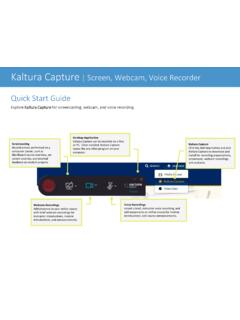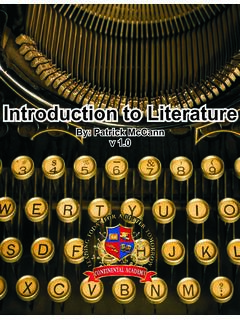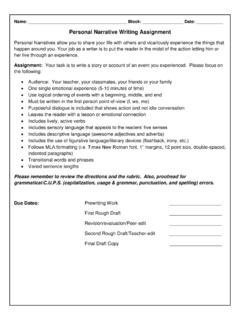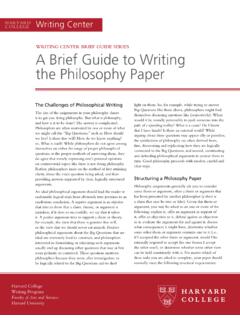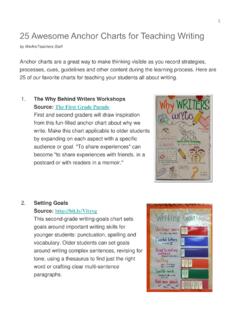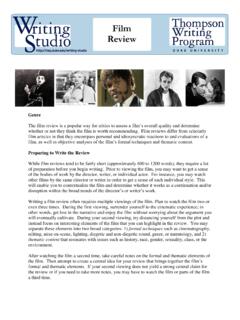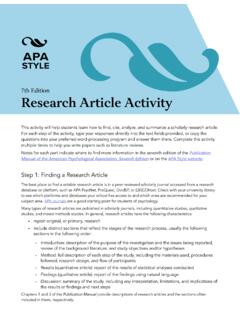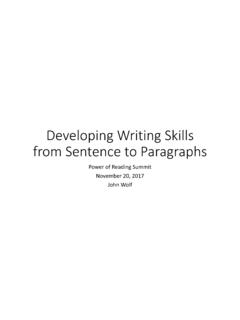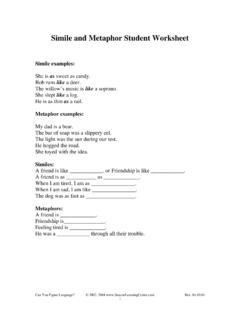Transcription of Assignment Type: Reflective Journals
1 Page | 1 Kent State Online This work is licensed under the Creative Commons Attribution International License. To view a copy of this license, visit http://creative Assignment Type: Reflective Journals What is it Journals are a personal space for private communication between instructor and students. Journals can be used as a self- Reflective tool for learners to post opinions, ideas, and concerns about the class, or discuss and analyze class related materials. Reflective learning is more the state of mind with which a student approaches content than it is the resolution or conclusions that the student draws from having learning something (Pavlovich, 2007).
2 Thus, the ability to think deeply about the material and draw connections to what one already knows is the key to Reflective learning. Journals are similar to blogs; however, blogs are usually public and Journals are private. NOTE: The Blackboard Learn Journal tool can be used for private or public Journals . In a public journal, all students in a class can see everyone else s journal entry; for a private journal, only the instructor can see the journal. This help-sheet deals specifically with using private Journals for reflection.
3 To create a private journal Assignment , be sure that Permit Course Users to View Journal is left unchecked in Journal Settings when you create the journal Assignment . Why use it Reflective journaling enhances critical thinking skills and encourages students to achieve deeper levels of learning. Students benefit from journaling because journaling promotes future learning. They center student thinking within the learning process and promote creativity in reflection. Journaling activities enhance the development of critical thinking and can transform learning.
4 When a student puts thought into their writing they are encouraged to think deeply, revisit their thoughts, and possibly challenge their thinking. Helping student s link course material with their experiences through reflection improves learning by increasing students comprehension of course material and their ability to apply those concepts in a wide variety of settings. In addition, journaling can enhance communication skills, self-learning, self- and social awareness, empathy, and sensitivity to cultural differences.
5 How to use it For reflection to occur, it is critical that the journaling Assignment coincide with the presentation of course material being reflected upon. In Blackboard Learn, instructors can open and close the journaling Assignment to correspond with the time that the material students are reflect upon is presented. Research has shown that Page | 2 Kent State Online This work is licensed under the Creative Commons Attribution International License. To view a copy of this license, visit http://creative depth of reflection increases if it is a regular activity (Dyment & O Connell, 2010).
6 Therefore, including journaling activities as regular intervals throughout a course will promote deeper reflections. Journals are a personal space for students to communicate privately with you. Students can also use Journals as a self- Reflective tool to post their opinions, ideas, and concerns about the course, or discuss and analyze course related materials. You can create journal assignments that are broad and student-directed as your students reflect on the learning process and document changes in their perceptions and attitudes.
7 Students can describe problems faced and how they solved them. Journals are ideal for individual projects. For example, in a creative writing course, the owner of each journal creates entries and an instructor comments. In this manner, a student can refine a section of a writing Assignment over a period of time, using an instructor s guidance and suggestions. A student can also comment on his or her entries to continue the conversation. In addition, journaling prompts can be written to check students comprehension of core concepts, promote Reflective connections of course material and personal experience, and enhance insight by promoting critical thinking.
8 The writing experience of the journal is used for the student to communicate their thinking process on a particular topic. Considerations The journal tool in Blackboard is not difficult to use, but providing explicit technical instructions is a best practice. A very short screencast video is an ideal way to demonstrate the tool for students. Journals focus on Reflective learning, which some students may find challenging. Students need to be taught what Reflective writing is since many of them have only been exposed to narrative writing .
9 It may be helpful to remind students that the journal is a private space between you and them to help students open up since their peers won t be reading their entries. (See the NOTE earlier in this help-sheet to understand the private vs. public setting on the Journal tool.) Reflective learners are motivated, proactive, use prior knowledge to extend their knowledge, critically evaluate their previous experiences, and are self-aware by being able to identify, explain, and address their strengths and weaknesses.
10 Instruction and assessment that uses Journals Any kind of content that should be reflected upon, analyzed critically, or that needs to be integrated with other knowledge is appropriate for a journal Assignment . Page | 3 Kent State Online This work is licensed under the Creative Commons Attribution International License. To view a copy of this license, visit http://creative Journals offer a means to expand the student s writing and communication skills to new platforms. Five types of reflection exist and it is important that you elaborate on the type of reflection you are asking your students to complete.
